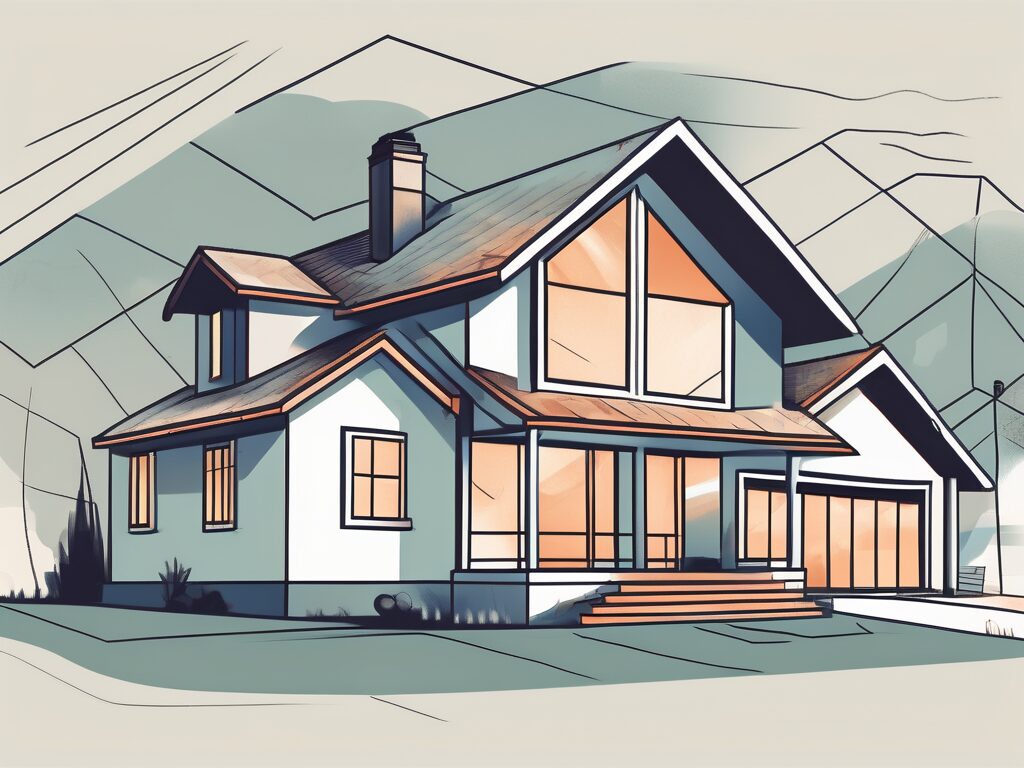
Agent A-Team or Solo Superhero? Finding the Right Real Estate Partner for Your Selling Journey in Wildwood Florida
When it comes to selling your home in Wildwood, Florida,…
January 29, 2024
Selling a home can be a complex and overwhelming process. From staging and marketing to negotiating offers, there are many factors that contribute to a successful sale. One crucial step that sellers should not overlook is the home inspection. Understanding the importance of a home inspection and preparing your Hypoluxo home for this process can significantly impact the outcome of your sale. In this article, we will guide you through navigating the home inspection process as a seller in Hypoluxo.
Before diving into the specifics of the home inspection process, it’s essential to grasp the significance of this step in real estate transactions. A home inspection is a thorough examination of a property’s condition, performed by a professional inspector. The primary purpose of a home inspection is to provide buyers with an objective assessment of the home’s condition, ensuring that they are making an informed decision.
In addition to benefiting buyers, a home inspection is also advantageous for sellers. By conducting a pre-listing inspection, sellers can identify potential issues ahead of time and address them proactively. This allows sellers to make necessary repairs or adjustments, increasing the likelihood of a smooth and successful sale.
When buyers make an offer on a property, they often include a contingency clause allowing them to conduct a home inspection. This contingency protects buyers from purchasing a property with undisclosed or severe defects. If significant issues are discovered during the inspection, buyers may choose to negotiate repairs or even withdraw their offer.
From a seller’s perspective, the home inspection serves as an opportunity to showcase the property’s condition and address any concerns upfront. By being proactive, sellers can minimize the likelihood of extensive negotiations or potential deal-breakers arising from the inspection.
As a seller in Hypoluxo, it is crucial to consider investing in a home inspection before listing your property. Doing so can provide several benefits:
Furthermore, a home inspection can also help sellers accurately price their property. By knowing the condition of the home, sellers can set a fair asking price that reflects the property’s true value. This can attract serious buyers who are willing to pay a premium for a well-maintained and inspected property.
Another advantage of a home inspection for sellers is that it can provide legal protection. By conducting a thorough inspection and addressing any issues, sellers can minimize the risk of future legal disputes. Buyers are less likely to make claims against sellers for undisclosed defects if a comprehensive inspection has been conducted and repairs have been made.
Additionally, a pre-listing home inspection can help sellers prioritize repairs and improvements. The inspection report can highlight areas that require attention, allowing sellers to focus on the most critical issues. This can save time and money by avoiding unnecessary repairs or renovations that may not significantly impact the sale.
Lastly, a home inspection can enhance the marketing of a property. Sellers can use the inspection report as a selling point, showcasing the property’s condition and the steps taken to address any concerns. This can attract potential buyers who value transparency and appreciate the effort put into maintaining and inspecting the property.
In conclusion, a home inspection is not only essential for buyers but also highly beneficial for sellers. It provides buyers with confidence and peace of mind while allowing sellers to address issues proactively, expedite the selling process, and minimize negotiations. Investing in a home inspection as a seller can lead to a faster sale, higher buyer satisfaction, and legal protection. It is a valuable step in ensuring a successful real estate transaction.
Now that you understand the importance of a home inspection, it’s time to focus on preparing your Hypoluxo home for this critical step. Here are some tips to help you get ready:
Prior to the inspection, it’s essential to present your home in the best possible light. A clean and well-maintained property is more likely to leave a positive impression on the inspector and potential buyers. Here are some cleaning and maintenance tips:
When it comes to preparing your home for inspection, attention to detail is key. Take the time to address any minor repairs or touch-ups that may be needed. This could include fixing loose doorknobs, replacing burnt-out light bulbs, or patching up any holes in the walls. By taking care of these small details, you demonstrate to the inspector and potential buyers that you have maintained your home with care and diligence.
Besides cleaning and maintenance, it is crucial to address potential issues that could affect the outcome of the inspection. Taking care of these matters ahead of time can save you from potential headaches later on. Here are some common areas to focus on:
It’s important to remember that a home inspection is not only about uncovering potential problems but also about showcasing the positive aspects of your home. Highlight any recent upgrades or renovations you have made, such as a new roof, updated kitchen appliances, or energy-efficient windows. These improvements can add value to your home and make it more appealing to potential buyers.
By following these tips and thoroughly preparing your Hypoluxo home for inspection, you increase the likelihood of a successful outcome. A well-maintained and problem-free home will not only impress the inspector but also attract potential buyers who are looking for a move-in ready property. So take the time to invest in the preparation process and reap the rewards when it comes time to sell your home.
Now that your home is prepared for the inspection, let’s delve into what you can expect during the actual home inspection process. Understanding what inspectors look for and the general timeline can help you navigate through this crucial step of the selling process.
During a home inspection, a certified inspector will thoroughly examine various aspects of your property to ensure its safety, functionality, and compliance with building codes. This comprehensive evaluation provides potential buyers with valuable information about the condition of the home.
A home inspector will meticulously assess every corner of your property, paying close attention to the following areas:
The duration of a home inspection can vary depending on the size, age, and condition of the property. On average, a standard home inspection can take anywhere from two to four hours. However, it’s essential to note that larger or older homes may require more time. During the inspection, it’s advisable for sellers to vacate the premises to allow the inspector to work efficiently.
While the inspector meticulously examines every aspect of the property, it’s important to remember that they are not there to pass or fail your home. Instead, their role is to provide an unbiased assessment of its condition. After the inspection, the inspector will compile a detailed report outlining their findings, which can be shared with potential buyers.
By understanding the home inspection process and what inspectors look for, you can be better prepared for this important step in selling your home. Addressing any potential issues beforehand can help streamline the selling process and increase the chances of a successful sale.
After the inspection is complete, the inspector will provide a detailed report outlining their findings. It’s essential for sellers to understand the information presented in the report to effectively address any issues or concerns raised. Here are some key points to consider when interpreting the home inspection report:
First and foremost, it’s important to carefully review the report and take note of any major issues that may have been identified. These could include problems with the roof, foundation, or electrical systems. Major repairs can be costly and time-consuming, so it’s crucial to address them promptly.
In addition to major repairs, the report may also highlight minor repairs that need attention. These can range from leaky faucets and loose handrails to faulty light switches. While these may seem like small issues, they should not be overlooked. Taking care of minor repairs can help maintain the overall condition and value of the home.
Another aspect to consider when interpreting the home inspection report is the presence of safety concerns. Inspectors are trained to identify potential safety hazards that may exist in the home. These can include exposed wiring, insufficient smoke detectors, or faulty stairs. It’s important to prioritize the resolution of these safety concerns to ensure the well-being of future occupants.
Home inspection reports often highlight various issues or areas that require attention. Some commonly found issues include:
Home inspection reports may contain technical terminology and jargon that can be overwhelming for sellers. It’s crucial to ask your inspector to explain any confusing terms and provide clarification as needed. By understanding the terminology, you can better navigate the process of addressing any concerns raised in the report.
For example, if the report mentions “efflorescence,” you may wonder what it means. Efflorescence is a white, powdery substance that can appear on concrete or masonry surfaces. It is often caused by water seepage and can indicate potential moisture issues. Understanding this term can help you assess the severity of the problem and determine the necessary steps for remediation.
Another term you may encounter is “GFCI.” GFCI stands for Ground Fault Circuit Interrupter, which is a type of electrical outlet designed to protect against electrical shock. If the report mentions a GFCI outlet not functioning properly, it’s important to have it repaired or replaced to ensure the safety of the electrical system.
By taking the time to understand the terminology used in the home inspection report, you can communicate effectively with professionals and make informed decisions regarding the necessary repairs and maintenance.
Once the inspection is complete and you have received the report, it’s time to take action to ensure a smooth closing of the sale. Here are some important steps to consider:
If the inspection report reveals significant issues, buyers may request repairs or ask for a price adjustment. As a seller, you have the option to negotiate and come to a resolution that satisfies both parties. It’s essential to work closely with your real estate agent to navigate this negotiation process and reach a mutually beneficial agreement.
If the inspection report reflects a positive outcome with minimal or no major issues, congratulations! Your home is one step closer to closing the sale. Continue working closely with your real estate agent to ensure a seamless closing process and a successful transaction.
In conclusion, the home inspection process plays a crucial role for sellers in Hypoluxo. Understanding the importance of home inspection, preparing your home for inspection, interpreting the inspection report, and navigating the post-inspection steps are essential for a smooth and successful sale. By being proactive and knowledgeable, sellers can confidently navigate the home inspection process and maximize the chances of a successful transaction.

If you want the Richr team to help you save thousands on your home just book a call.
 Book a call
Book a call